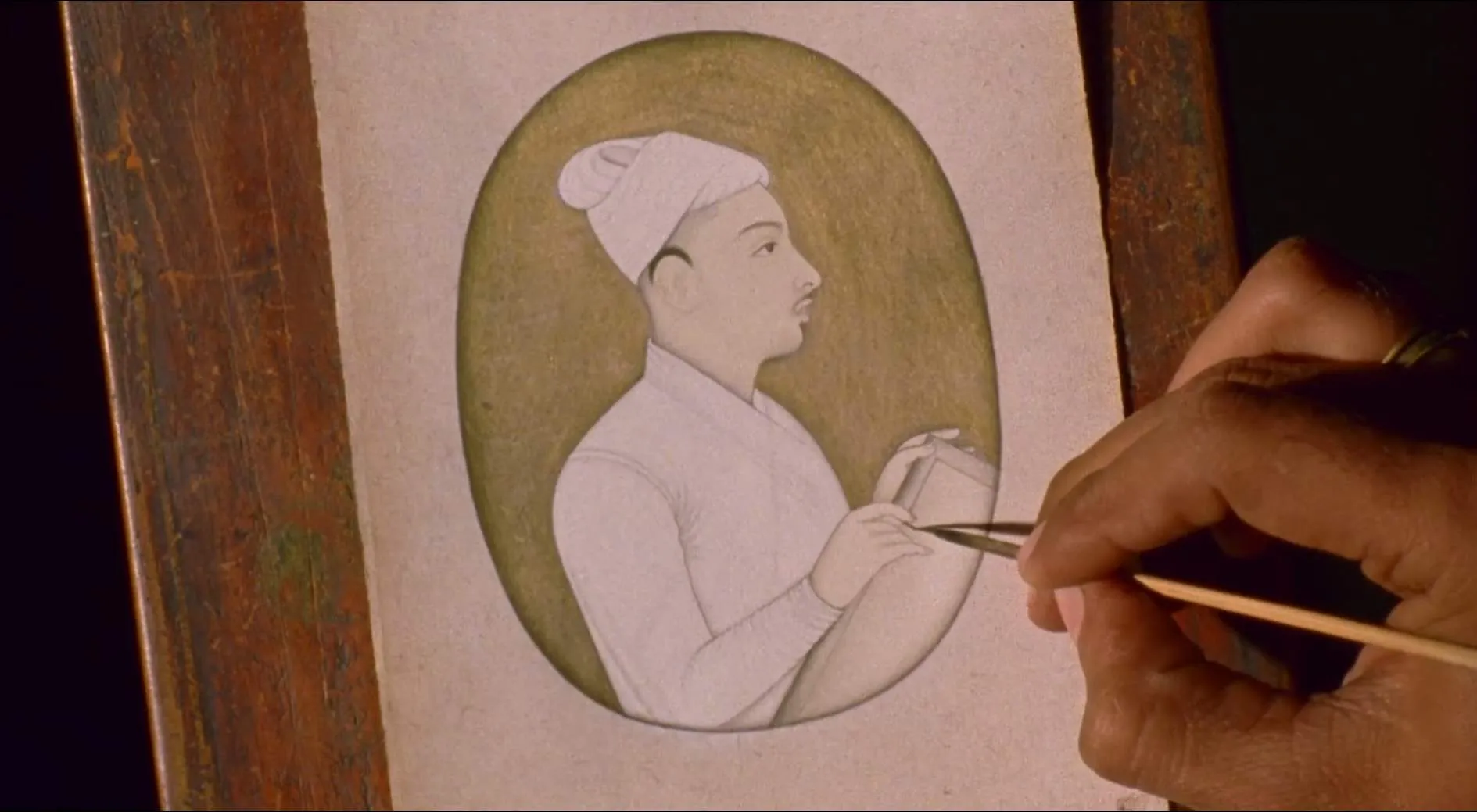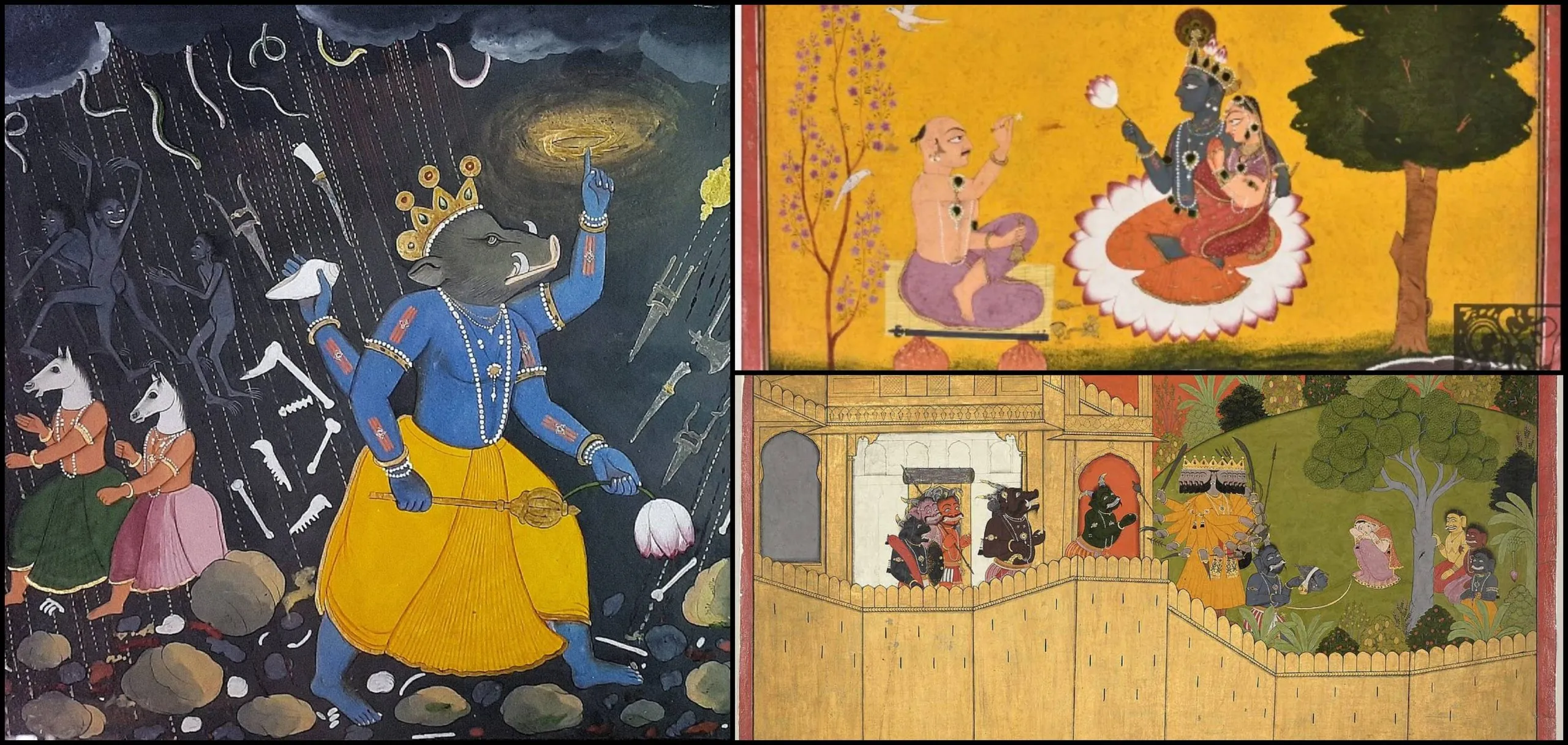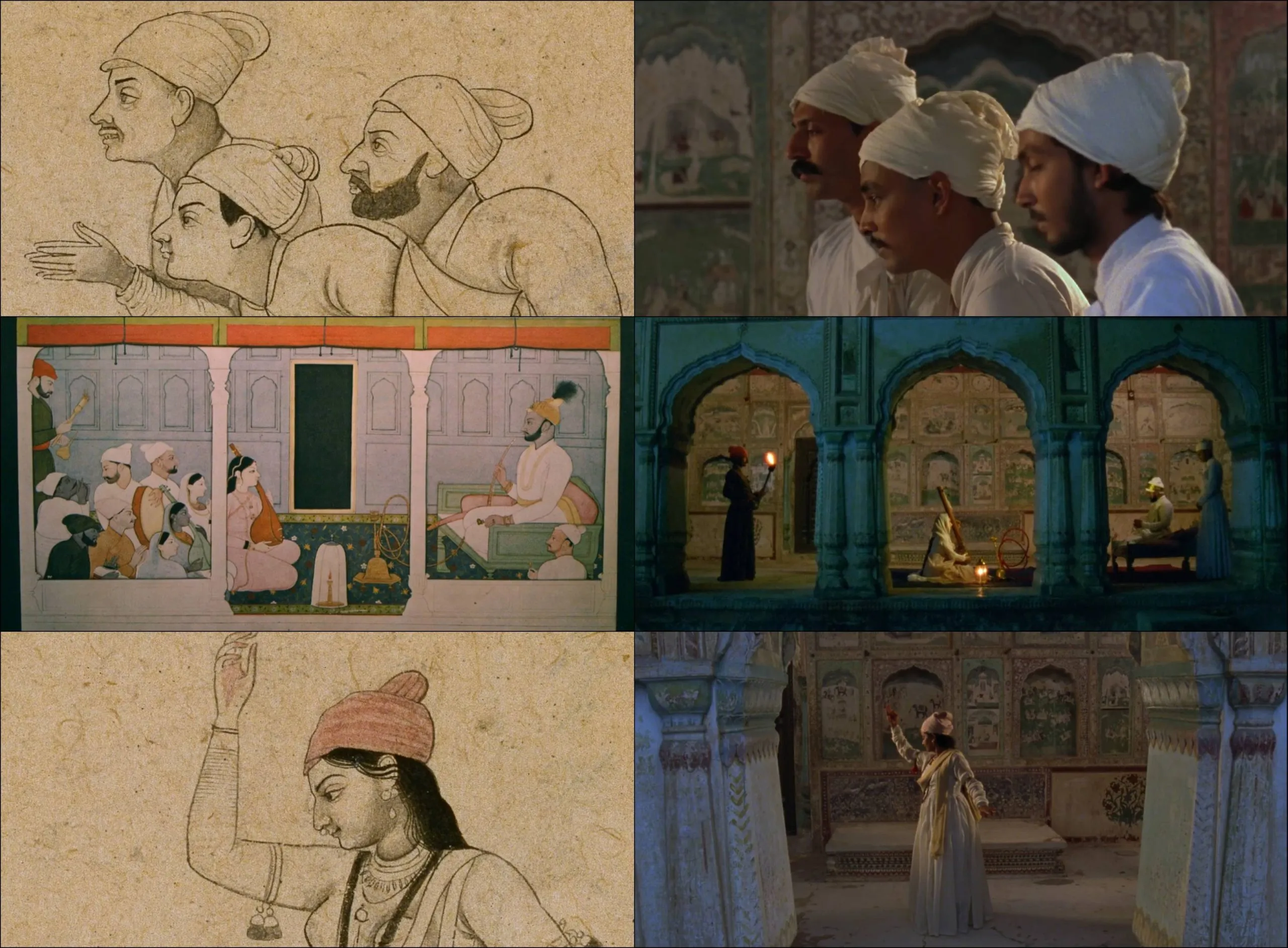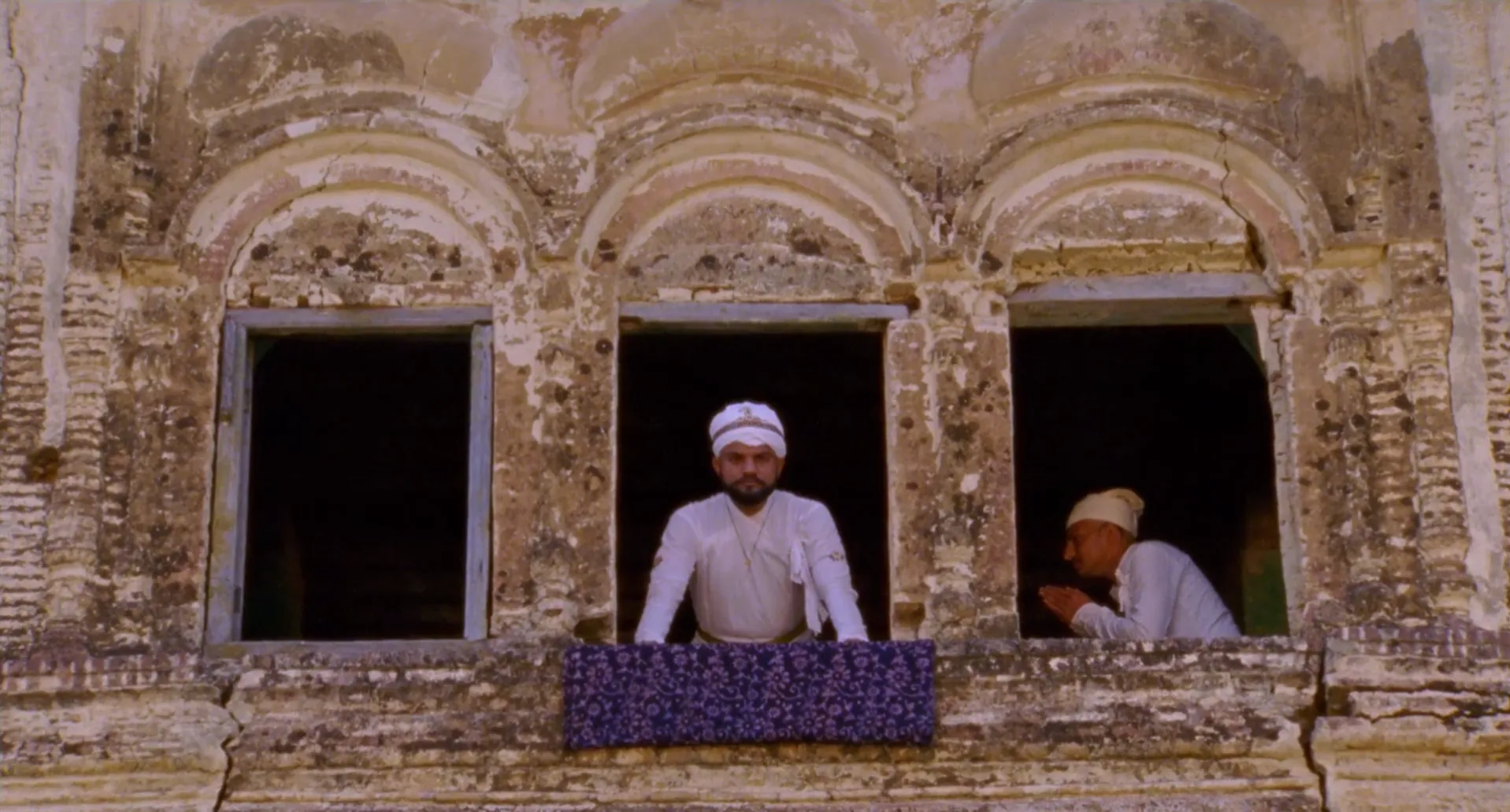
Form Over the Subject in Amit Dutta’s “Nainsukh”
The reading of an artist’s body of work through its abstract reconstruction or reinvention is a cinematic approach that can be traced many decades back.
In Sergei Parajanov’s surreal biopic of the 18th-century Armenian poet and troubadour Sayat-Nova (1969), the poems are not heard but seen through Parajanov’s hermetic and personal visual language. Hiroshi Teshigara expressed his admiration for Gaudi’s work in his film Antonio Gaudi (1984) by using his distinct camera work to construct a visually stunning poem on Gaudi’s spectacular architecture.
Even though such an approach has had few takers, contemporary filmmakers like Amit Dutta still choose to marry different forms of art with cinematic experiments. In his film Nainsukh (2010), he uses a unique filmic grammar to give “visual voice” to works of art with his exceptional use of his camera work, composition, lighting, and sound design.
Famous but Unheard
Amit Dutta, sometimes referred to as “the most famous Indian filmmaker you may have never heard of,” is an acclaimed filmmaker, whose works have received a number of national and international awards.
His short film Kramasha (2007) was included by the renowned film critic Jonathan Rosenbaum in his list of a thousand essential films of all time. The film was described by Rosenbaum as a “dazzling, virtuoso piece of mise en scène in 35-millimetre, full of uncanny imagery about the way the narrator imagines the past of his village and his family.”
Dutta’s stories are mostly inspired by Indian art history, philosophy, literature, and narrative traditions. Like Nainsukh, many of his short films (Chitrashala, Gita Govinda, Scenes from a Sketchbook, Drawn from Dreams) are inspired by his engagement with Pahari miniature, a form of Indian painting originating from Himalayan hill kingdoms of North India, during the 17th-19th century.
While Dutta doesn’t use in general the term experimental to describe his work, his stylistic choices and filmic grammar suggest that his films take a rather unconventional approach by focusing more on the technique and means of storytelling than the story itself.

Pantings by Nainsukh’s older brother Manaku of Guler, another exponent of Pahari style of painting. Left: Vishnu as Varaha challenges the demon Hiranyaksha (1740), top right: Poet Jayadeva worshipping Radha and Krishna (1730), bottom right: Ravana shows Sita the counterfeit head of Rama (1725)
The Re-Creation of Nainsukh’s Work
For the prominent American art historian Milo C. Beach, the film Nainsukh “will do more for public interest in Indian painting than all the many scholarly essays.” The film is a quasi-biographical account of Nainsukh of Guler, an 18th-century miniature painter, who has been called “one of the most original and brilliant of Indian painters.”
Dutta’s film, produced by Switzerland’s Museum Rietberg, is considered the culmination of his research on Pahari miniature painting in the Kangra Valley of Himachal Pradesh (a state in North India). Nainsukh played an important role in reinventing the Pahari miniature tradition by painting secular scenes from the royal court, where he was an official artist after leaving his father’s celebrated workshop.
In this film, a series of Nainsukh’s miniature paintings ― mostly created during his time as a court painter ― are re-created adhering to the tableau vivant style. The paintings are used as templates for the enlivening of the deceptively flat pictures and painterly subjects. The compositions are meticulously curated and attention is given to both architectural and environmental details. The windows and doors of the palace are sometimes used as frames to accommodate the subjects and to organically create the dividing lines between them.

A series of Nainsukh’s miniature paintings is re-created following the tableau vivant style.
The subjects are given a dynamism that does not derive from their actions or personality but from their form, their movement (or its absence), and their place within the frame. The usage of wide angle shots creates a perfect environment for the subjects to move with surgical precision and to build a relationship with the environment that encloses them.
The sound design plays a key role as well in the process of creating an immersive atmosphere and pushing the connection between the viewer and the artist one step further. Throughout the viewing experience, the sound design creates an eerie atmospheric soundscape, a riveting rhythm, and an inextricable link between nature and its living beings. Overall, Dutta’s visual language inadvertently leads towards the immortalization of his subject ― Nainsukh and his body of work.

The windows as frames that accommodate the subjects.
While Dutta’s early short films were already well known in experimental cinema circles, it was perhaps Nainsukh that brought him to the forefront of his field. The retrospective of his work available on the streaming platform MUBI is a great starting point for those interested in exploring a “unique cinematic voice in Indian cinema.”